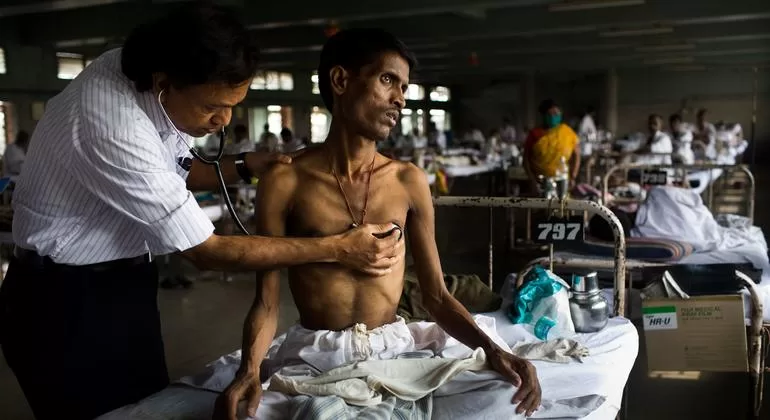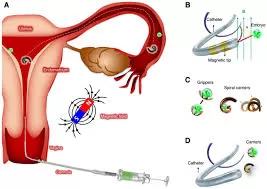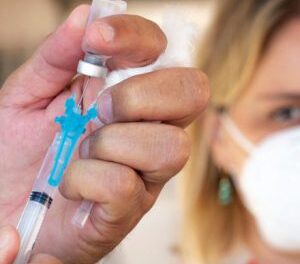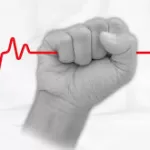In a bustling clinic in India, a young student’s dreams are abruptly dashed when a doctor delivers the diagnosis: “You have MDR-TB with resistance to rifampicin. We are afraid you will have to give up your scholarship and stay in isolation until your sputum tests are negative. We’ll hospitalize you right away.” Confusion sets in. “What is MDR-TB? What is sputum? What does rifampicin mean?” The weight of these questions presses down on the student as they face the reality of months—if not years—of treatment, isolation, and uncertainty.
For many individuals battling tuberculosis (TB) in countries like India, this moment is life-altering. The news not only signifies a medical challenge but also threatens personal and professional aspirations. In a healthcare system where tuberculosis is one of the leading public health threats, the treatment approach needs to go beyond just prescribing antibiotics. It requires a more comprehensive, holistic approach that considers the entire person—body, mind, and emotions.
The Need for a Holistic Approach to TB
Holistic care in TB treatment involves more than just managing the physical symptoms of the disease. It’s about understanding and addressing the physical, mental, and emotional well-being of the individual from the moment they are diagnosed. This is especially important in the case of drug-resistant TB (MDR-TB), where patients undergo longer regimens that come with severe side effects like nausea, hair loss, rashes, insomnia, and more. The intensity of these side effects can leave patients feeling hopeless, exhausted, and even tempted to give up their treatment. It is during these moments that medical intervention must extend beyond just the prescription pad.
A crucial part of holistic care is ensuring that patients have access to a supportive environment that fosters treatment adherence. Regular check-ins with healthcare professionals can help patients manage side effects, alleviate their fears, and build trust in the treatment process. Effective, two-way communication between doctors and patients is essential, and it can make all the difference in treatment outcomes.
Addressing the Mental Health Aspect
TB treatment can also affect a patient’s mental health. For many, the physical toll of the disease is compounded by mental health challenges, including depression, anxiety, and low self-esteem. The long course of treatment can exacerbate these issues, making it vital to have parallel psychological support. Counselors can help patients cope with the emotional rollercoaster that comes with a TB diagnosis and treatment. They can guide patients and their families through the overwhelming realities of the disease, offering practical and emotional support.
Unfortunately, for some, the stigma attached to TB can lead to isolation, rejection, and even the loss of loved ones. In a society where skin changes and physical appearance can draw unwanted attention, individuals with TB are often subjected to insensitive remarks such as, “What happened to your skin color?” or “You look so dark.” Such comments can deepen the emotional strain and hinder successful treatment. Holistic care, therefore, must also involve educating communities about TB, reducing stigma, and offering emotional care that goes beyond sympathy.
Social and Economic Impacts
TB doesn’t just affect the body; it also takes a toll on a person’s livelihood and social standing. The forced pause in one’s career or education due to TB treatment can lead to feelings of failure, guilt, and frustration. The loss of job opportunities, scholarships, and social engagement can push individuals to the edge. This is where the role of family, friends, and support networks becomes crucial. Having access to periodic therapy or counseling can help individuals cope with the fear of missing out and mitigate the psychological risks of isolation.
A Model for Comprehensive Care
Can we create a healthcare model where monthly follow-ups aren’t just about checking vital signs and sputum tests but also about addressing the mental well-being of the patient? In the private sector, this may be achievable, but what about in the public healthcare system, where resources are often limited?
The truth is that achieving a truly holistic model for TB care will require coordinated efforts from health systems, policymakers, and NGOs. We need to prioritize patient-centered care that addresses the biological, emotional, and social needs of individuals. This model must include not only medication but also counseling, social support, and community education.
Conclusion: Healing the Whole Person
In the fight against TB, holistic care isn’t just about eradicating bacteria; it’s about healing the whole person. By recognizing the complexities of living with TB and treating the whole individual—biologically, mentally, socially, and emotionally—we can reduce the burden of this disease. The journey of battling TB is not just a medical one, but a deeply personal and transformative experience. It’s time we shift our approach to care, placing the patient at the center and addressing their needs as a whole.
As individuals, families, and society, we must be compassionate and sensitive to the realities of those affected by TB. Together, we can create a more empathetic, supportive environment for people on their journey to recovery—because holistic care isn’t just about medicine; it’s about healing lives.











